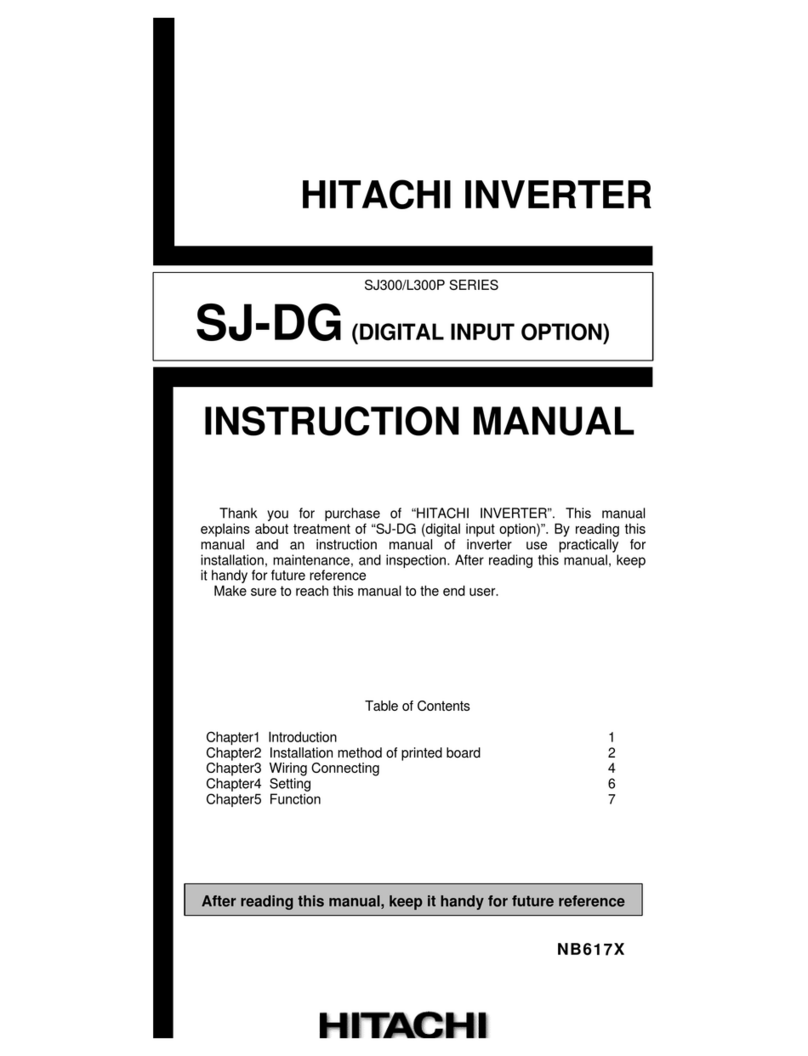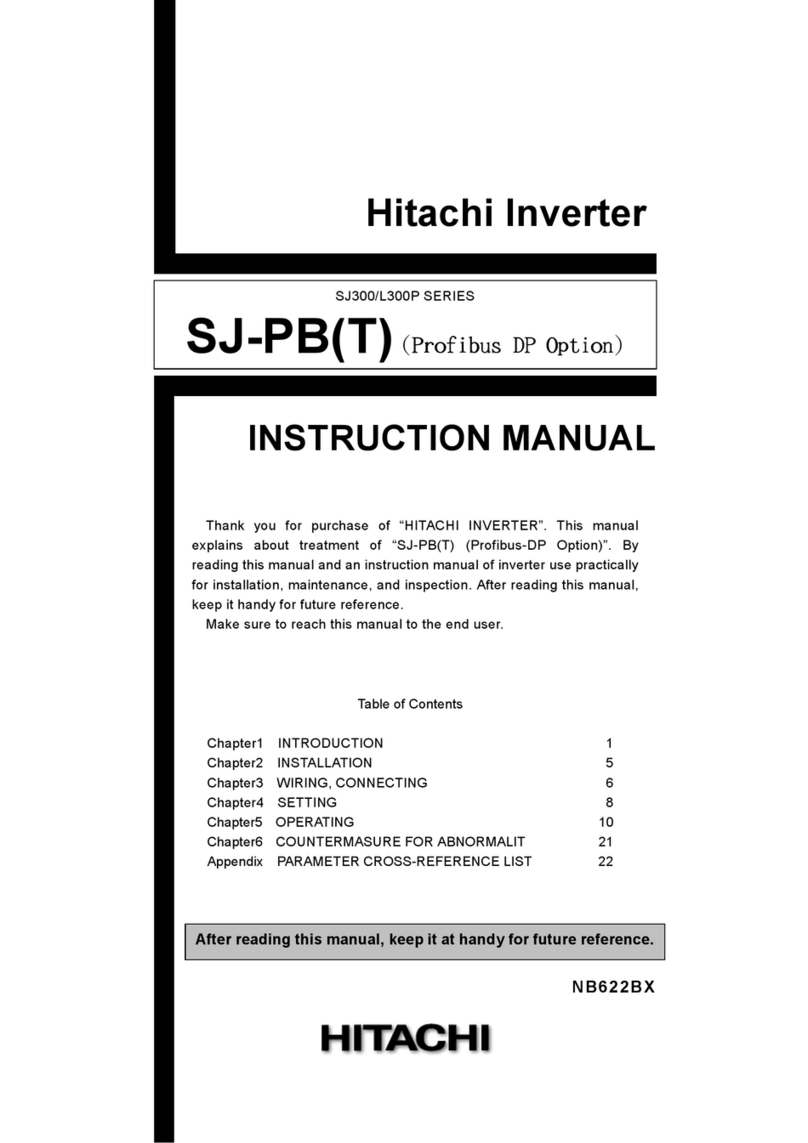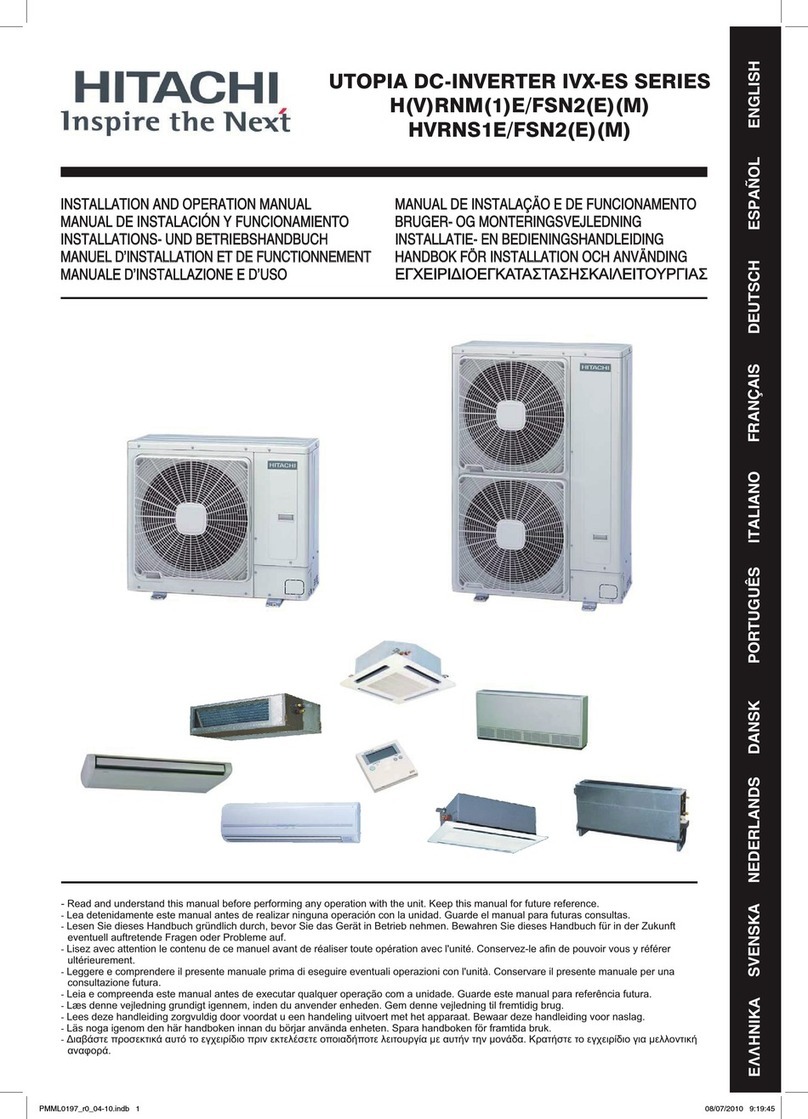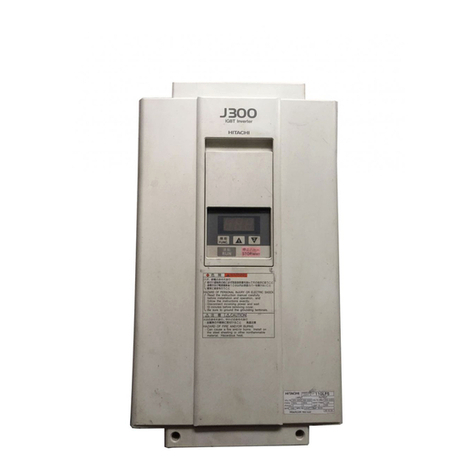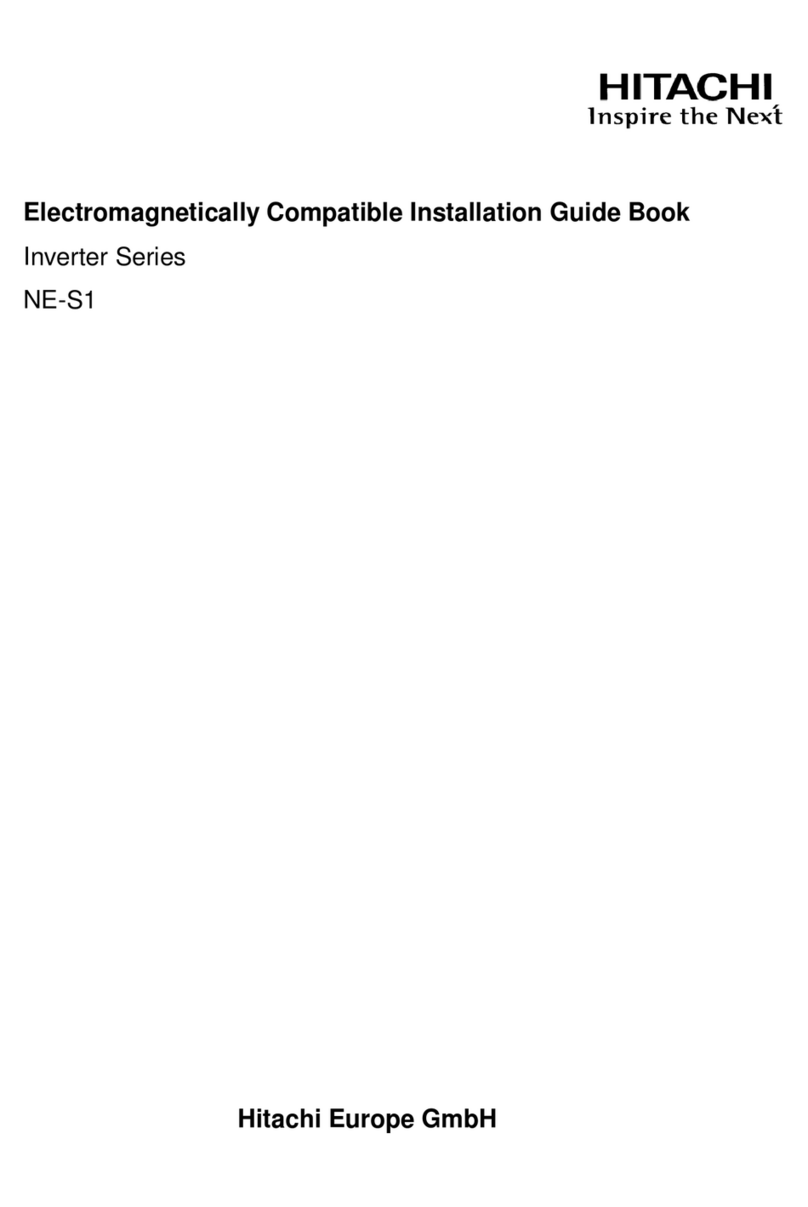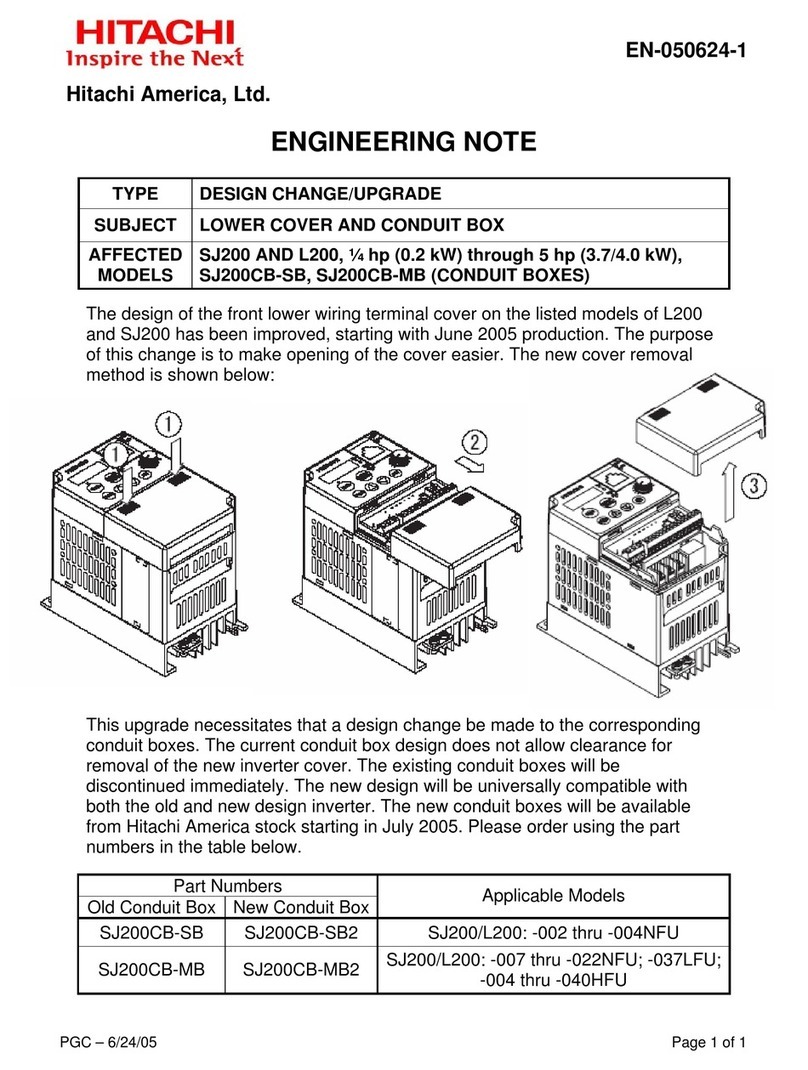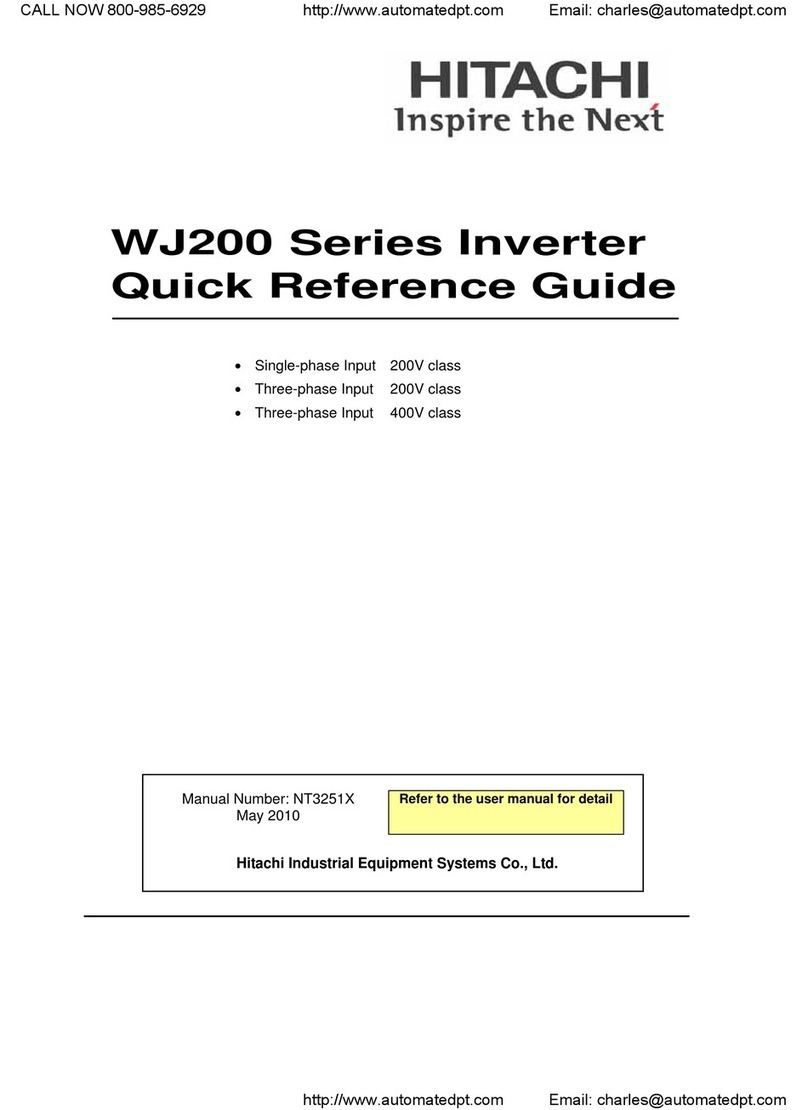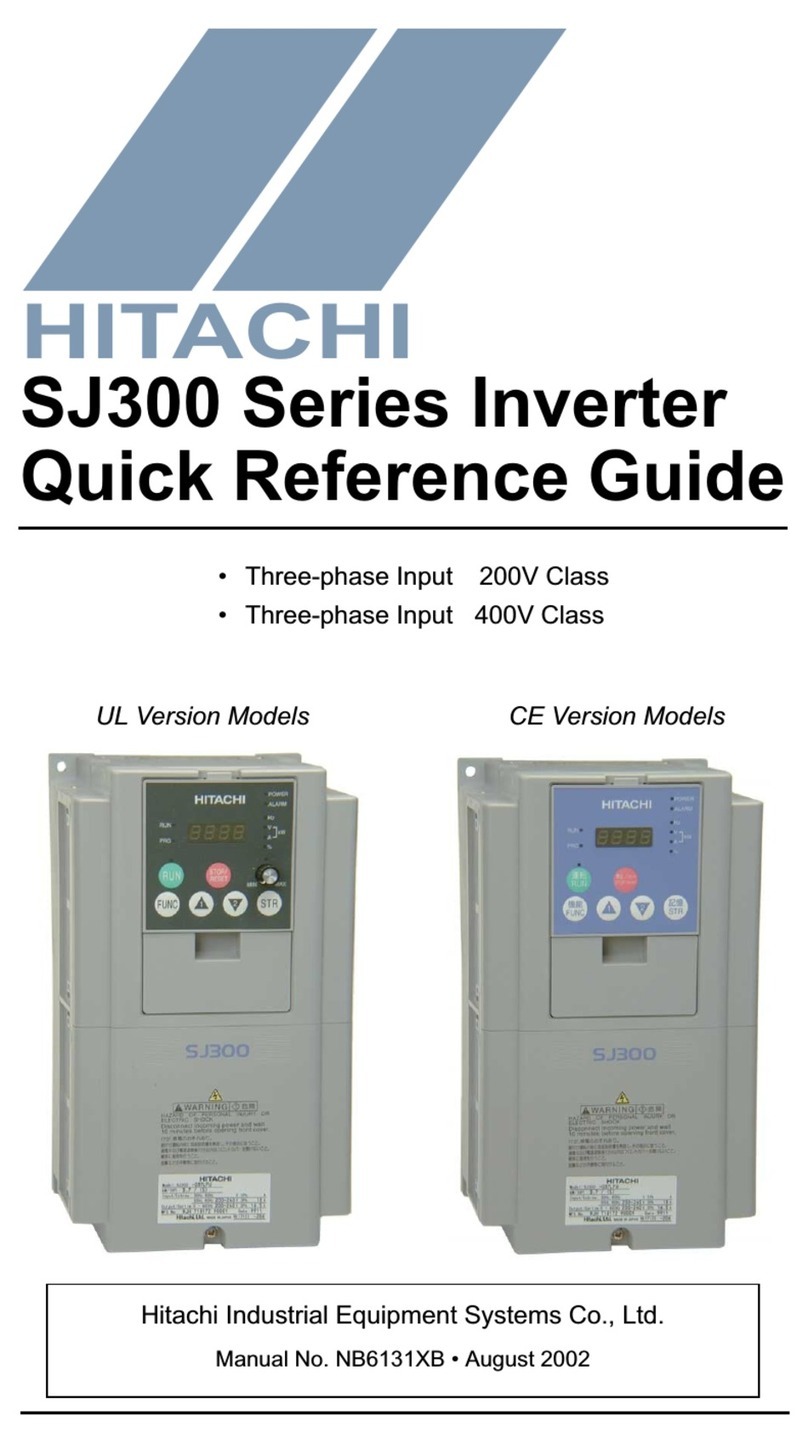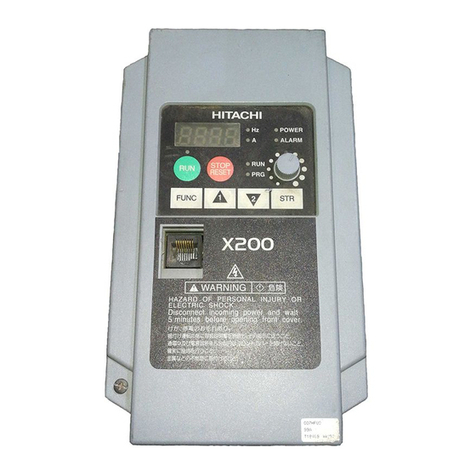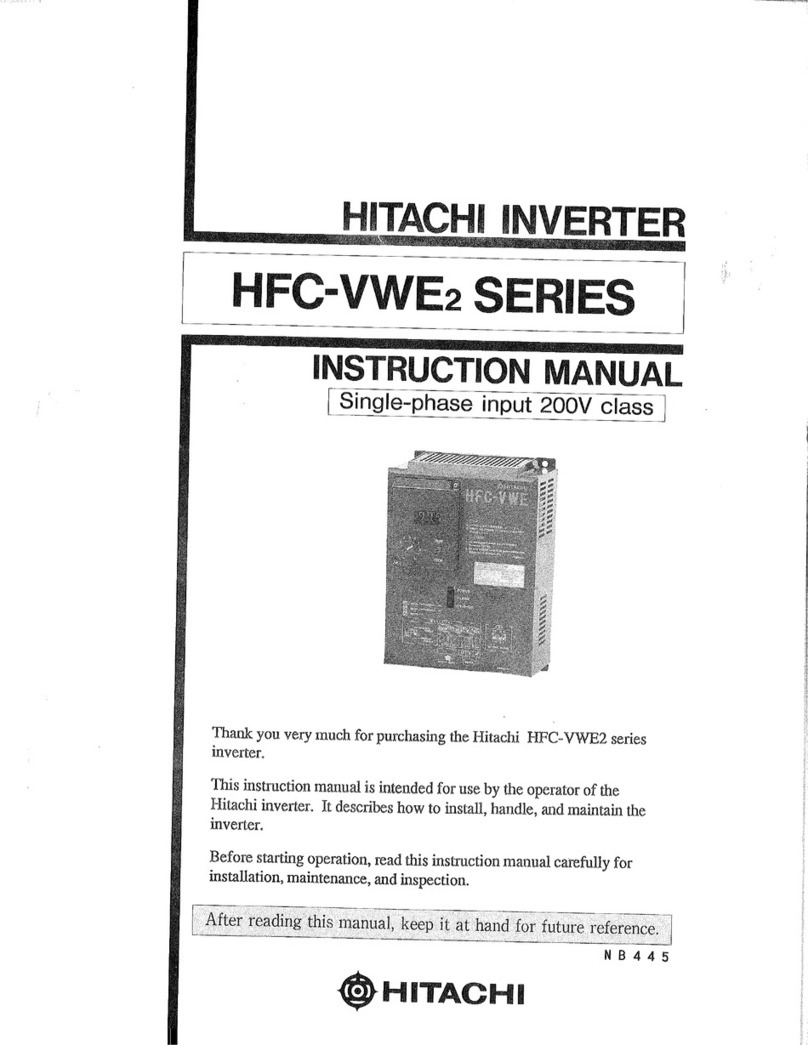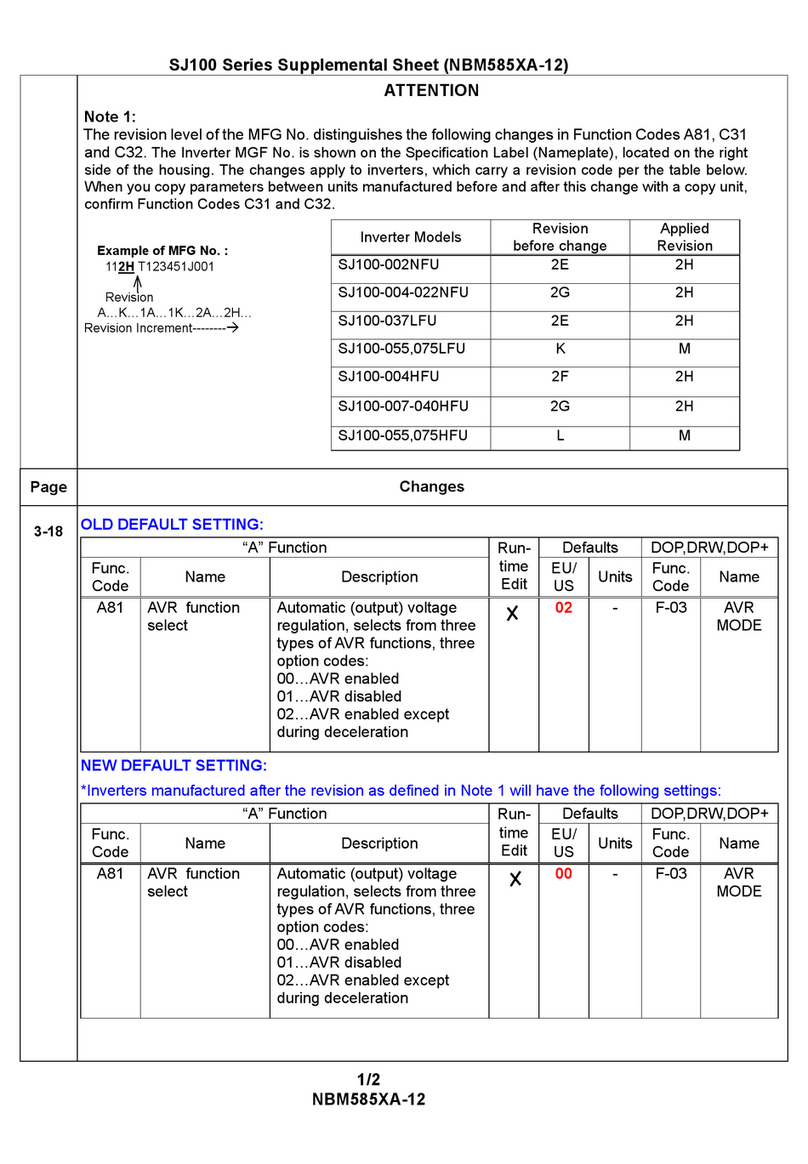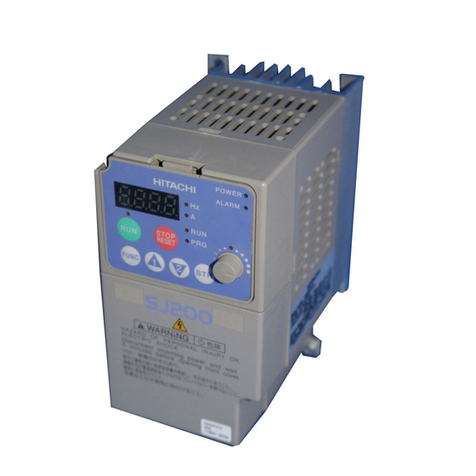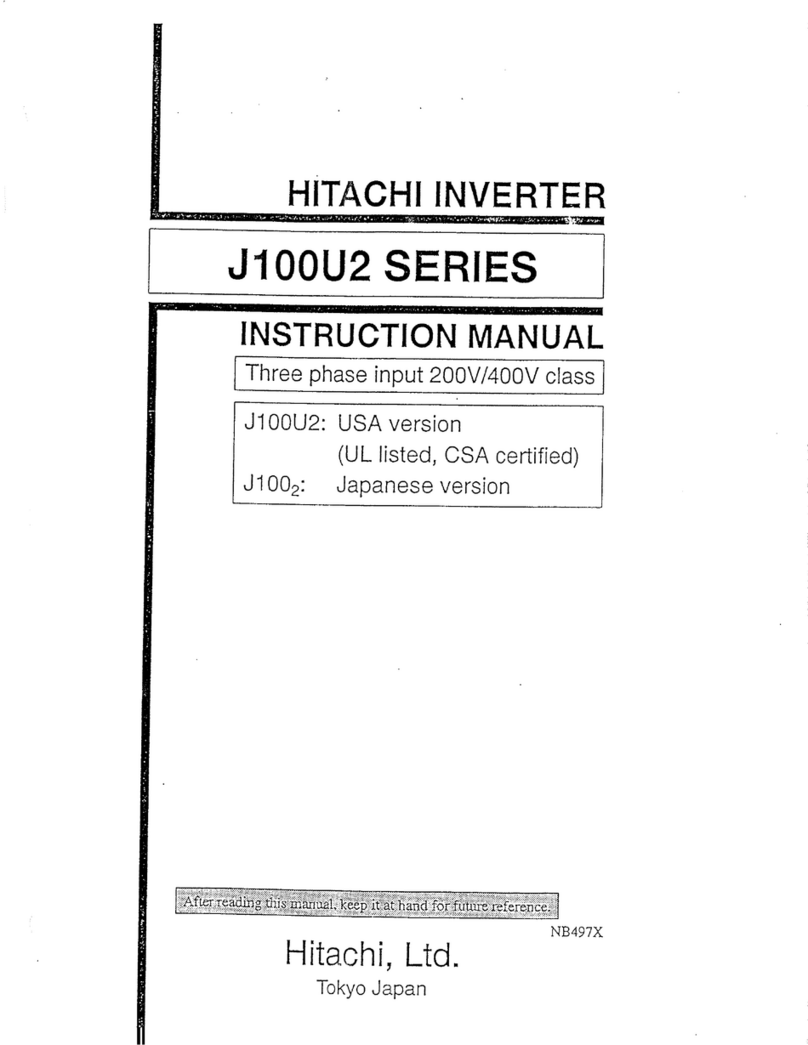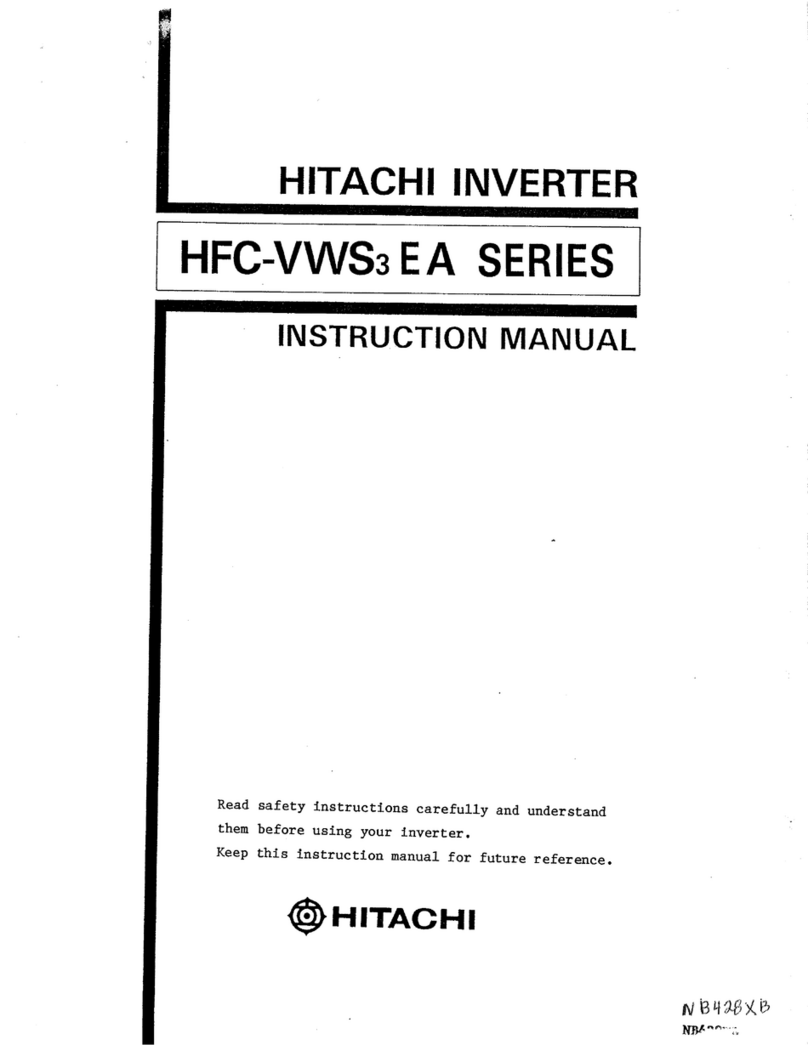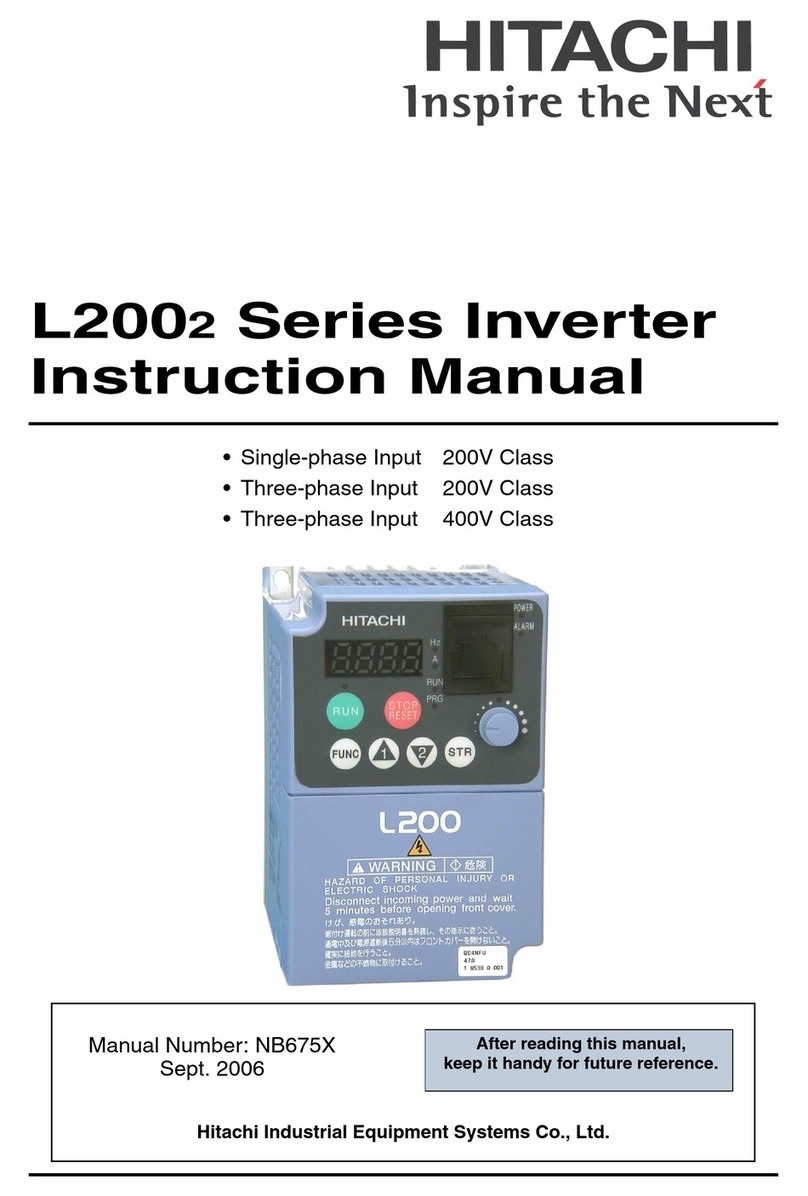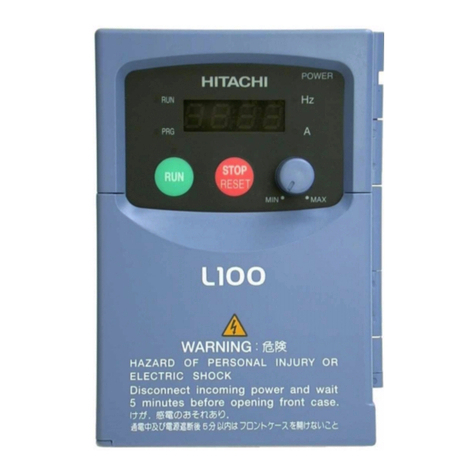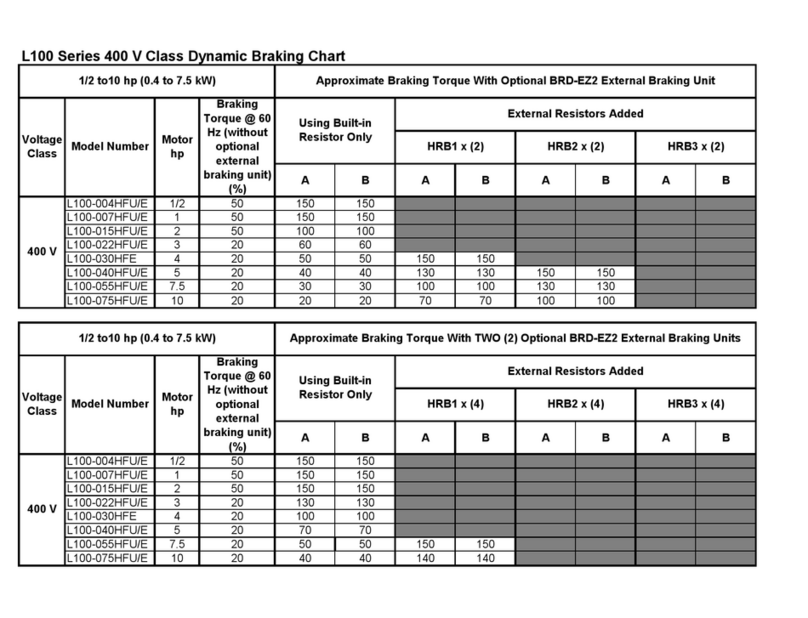
1
Introduction
Thank you for purchasing the Hitachi WL200 series inverter.
Please read this Basic Manual and Instruction manual, and understand perfectly how to handle
properly and the safety cautions of the product before operation, for safety and proper usage.
Note that this Basic Manual is intended for each product and should be delivered to the end
user of the inverter.
Safety precautions
Be sure to read this Basic Manual and appended documents thoroughly before installing,
operating the inverter.
Maintenance and service items in this Basic Manual are only caution related items. Read the
Instruction manual carefully before starting the maintenance and service. (Instruction manual
can be downloaded from our website.)
In the Instruction Manual, safety instructions are classified into two levels, namely WARNING
and CAUTION.
: Indicates that incorrect handling may cause hazardous situations, which may
result in serious personal injury or death.
: Indicates that incorrect handling may cause hazardous situations, which may
result in moderate or slight personal injury or physical damage alone.
Note that even a level situation may lead to a serious consequence according
to circumstances. Be sure to follow every safety instruction, which contains important safety
information. Also focus on and observe the items and instructions described under "Notes" in
the text.
Many of the drawings in the Instruction Manual show the inverter with covers and/or parts blocking
your view being removed.
Do not operate the inverter in the status shown in those drawings. If you have removed the covers
and/or parts, be sure to reinstall them in their original positions before starting operation, and follow
all instructions in the Instruction Manual when operating the inverter.
- Install the inverter on a non-flammable surface, e.g., metal. Otherwise, you run the risk of fire.
- Do not place flammable materials near the installed inverter. Otherwise, you run the risk of fire.
- When carrying the inverter, do not hold its top cover. Otherwise, you run the risk of injury and
damage by dropping the inverter.
- Prevent foreign matter (e.g., cut pieces of wire, sputtering welding materials, iron chips, wire, and
dust) from entering the inverter. Otherwise, you run the risk of fire.
- Install the inverter on a structure able to bear the weight specified in this document. Otherwise, you
run the risk of injury due to the inverter falling.
- Install the inverter on a vertical wall that is free of vibrations. Otherwise, you run the risk of injury
due to the inverter falling.
- Do not install and operate the inverter if it is damaged or its parts are missing. Otherwise, you run
the risk of injury.
- Install the inverter in a well-ventilated indoor site not exposed to direct sunlight. Avoid places where
the inverter is exposed to high temperature, high humidity, condensation, dust, explosive gases,
corrosive gases, flammable gases, grinding fluid mist, or salt water. Otherwise, you run the risk of
fire.
- The inverter is precision equipment. Do not allow it to fall or be subject to high impacts, step on it,
or place a heavy load on it. Doing so may cause the inverter to fail.
